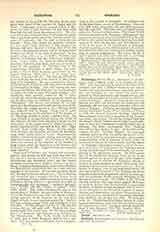

Gebhard (III) of Constance, bishop of that city, and strenuous defender of papal rights against imperial encroachments during the Investitures conflict; b. about 1040; d. November 12, 1110. He was a son of Duke Bertold I and a brother of Bertold II, of Zahringen. For some time he was provost at Xanten, then entered the Benedictine monastery at Hirschau and on December 22, 1084, was consecrated Bishop of Constance by the cardinal-legate, Otto of Ostia, the future Urban II. The see of Constance was then occupied by the imperial anti-Bishop Otto I, who, though excommunicated and deposed by Gregory VII in 1080, retained his see by force of arms. At an imperial synod held at Mainz, in April, 1085, Gebhard and four-teen other German bishops who remained faithful to Gregory VII were deposed, and Otto I was declared the lawful Bishop of Constance. Luckily, Otto I died in the beginning of 1086, and Gebhard was able to take possession of his see. One of his first acts as bishop was the reform of the Benedictine monastery of Petershausen near Constance, which he recruited with monks from Hirschau. In 1089 he consecrated the new cathedral of Constance, to replace the old one which had fallen into ruins in 1052.
On April 18, 1089, Pope Urban II appointed him and Bishop Altmann of Passau, Apostolic-vicars for Germany. Arnold, a monk of St. Gall, whom Henry IV appointed anti-Bishop of Constance on March 28, 1092, tried in vain to eject Gebhard from the See of Constance. The latter had powerful friends in his brother Bertold II, Duke Welf IV, the monks of Hirschau and Petershausen, and the citizens of Constance. In 1094 Gebhard held a synod of reform at Constance, and in 1095 he attended the Synod of Piacenza. Soon, however, the influence of Henry IV began to increase in Germany. In 1103 Gebhard was driven from his see, and the imperial anti-bishop, Arnold, usurped the bishopric. With the assistance of Henry V, Gebhard regained his see in 1105, freed the king from the ban by order of Paschal II, and accompanied him on his journey to Saxony. Gebhard attended the Synod of Nordhausen on May 27, 1105, the diet at Mainz on Christmas, 1105, was sent as imperial legate to Rome in the spring of 1106, and was present at the Council of Guastalla in October of the same year. In the fresh dispute that arose between Paschal II and Henry V, Gebhard seemed to side with the emperor, but, after being severely reprimanded by the pope, withdrew from public life and devoted his whole attention to the welfare of his diocese.
MICHAEL OTT

